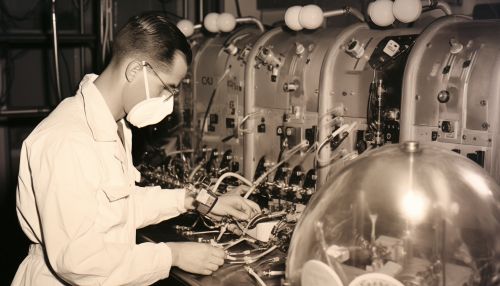Nuclear Medicine
Introduction
Nuclear medicine is a specialized branch of medicine that uses radioactive substances in the diagnosis and treatment of diseases. This field combines aspects of both radiology and internal medicine, and it is primarily concerned with the study of physiological processes rather than anatomical structures.
History
The history of nuclear medicine can be traced back to the discovery of radioactivity in the late 19th century. The first practical application of this discovery in medicine was the use of radium for the treatment of cancer. However, the field of nuclear medicine as we know it today did not begin to take shape until the mid-20th century, with the development of the first gamma camera in 1958.
Principles
Nuclear medicine procedures are based on the principle of radiopharmacology, which involves the use of radiopharmaceuticals – drugs that have been labeled with radioactive isotopes. These radiopharmaceuticals are administered to the patient and then tracked within the body using special imaging devices.
Radiopharmaceuticals
Radiopharmaceuticals are a key component of nuclear medicine. These are drugs that have been labeled with radioactive isotopes, known as radionuclides. The choice of radionuclide is determined by several factors, including its physical characteristics, the intended use of the radiopharmaceutical, and the desired imaging or therapeutic effect.
Imaging Techniques
There are several imaging techniques used in nuclear medicine, including positron emission tomography (PET), single photon emission computed tomography (SPECT), and planar imaging. These techniques provide functional information about the body's organs and tissues, which can be used to diagnose and monitor a wide range of diseases.
Therapeutic Applications
In addition to its diagnostic applications, nuclear medicine also has a number of therapeutic uses. These include the treatment of various types of cancer, thyroid disease, and certain blood disorders. The use of radiopharmaceuticals in therapy allows for targeted treatment of disease, minimizing damage to healthy tissues.
Safety and Risks
Like all medical procedures, nuclear medicine carries certain risks. These primarily relate to the exposure to ionizing radiation. However, the benefits of nuclear medicine procedures generally outweigh the risks, and every effort is made to minimize radiation exposure to patients.
Future of Nuclear Medicine
The future of nuclear medicine is promising, with ongoing research and development in areas such as new radiopharmaceuticals, advanced imaging techniques, and novel therapeutic applications. The field is also becoming increasingly integrated with other areas of medicine, such as oncology and cardiology.


